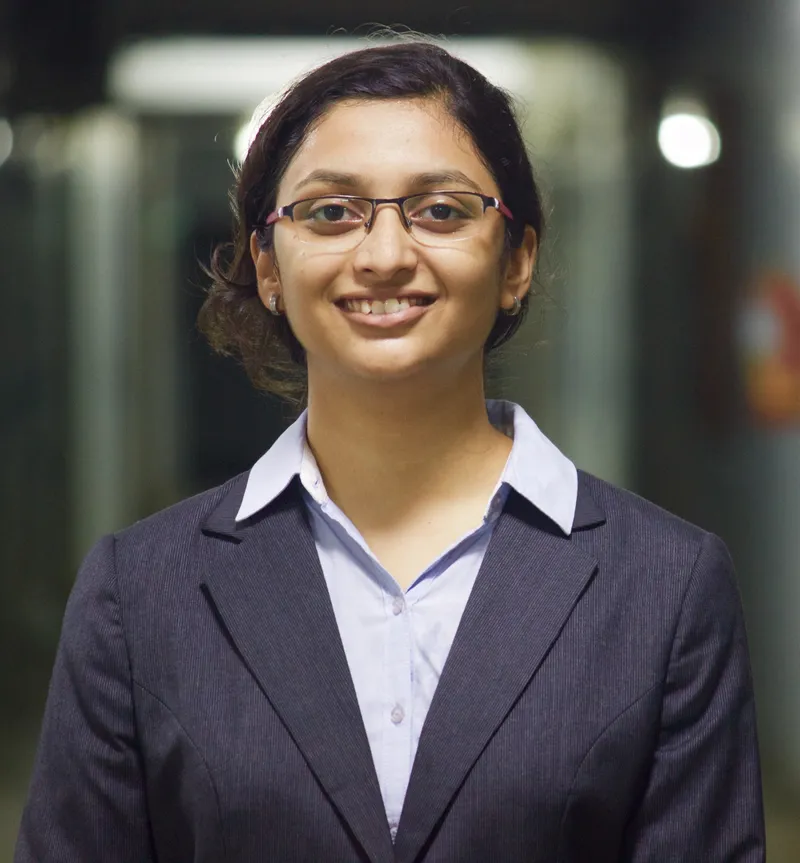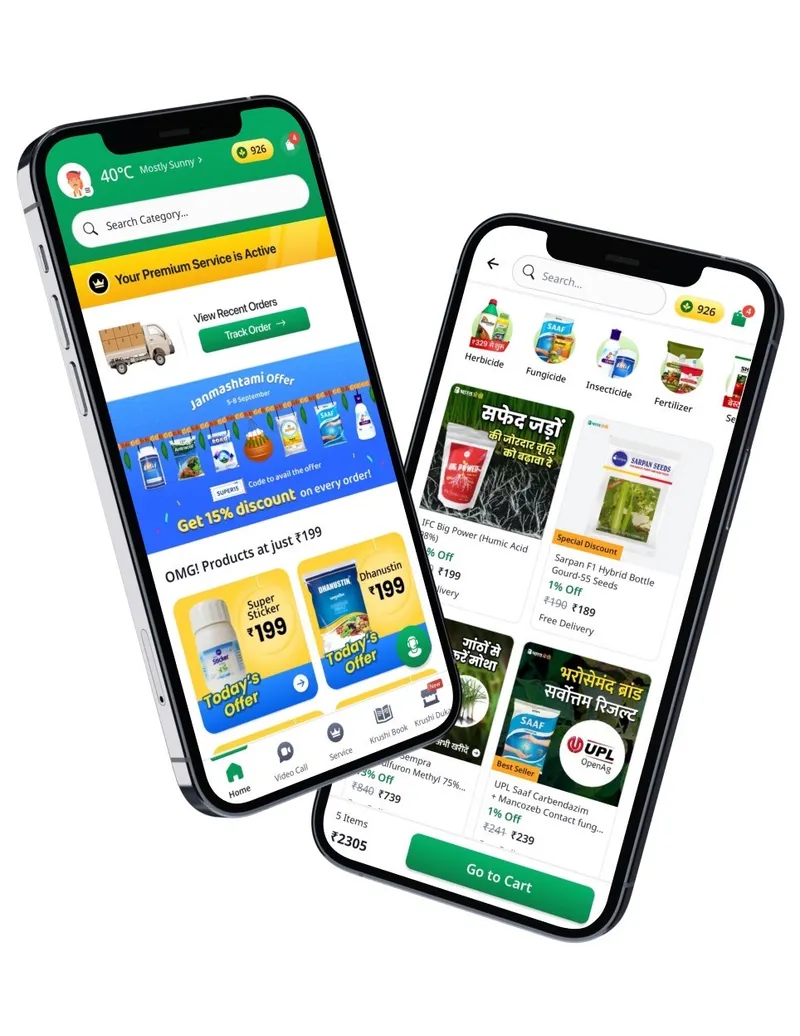How this woman entrepreneur built BharatAgri from ground up to empower farmers digitally
Hailing from a family of agriculturists, Sai Gole understood first-hand the diverse challenges faced by farmers. She and Siddharth Dialani started BharatAgri, a tech platform for farmers offering them smart solutions to increase crop productivity.
Growing up in a family with strong agricultural roots, Sai Gole witnessed first-hand the challenges and risks associated with farming in a region like Vidarbha, infamous for its farmer suicides due to huge debts and crop failure.
Her extended family owned and managed farms in Arvi, 120 km away from Nagpur. Their experiences moulded the young Sai who would later, search for effective solutions to help farmers, beginning with Western Maharashtra and extending to other Indian states.

Sai Gole, Co-founder, BharatAgri
This would also lead her and her batchmate at IIT-Madras, Siddharth Dialani, to start BharatAgri in 2017, a farming technology platform that works with farmers on what, how, and when to grow, with smart farming advisories to maximise production and income.
“My uncle used to own agricultural land in Arvi, and we travelled every weekend to meet the extended family. We used to majorly grow cotton, soybean, and chickpeas that were not very profitable crops. During my teenage years, the news of farmer suicides was common, and I used to question my uncle a lot as to why this was happening,” Gole tells HerStory.
Factors hindering growth
While she was not satisfied with her uncle’s “blank reviews”, she understood that the lack of education among farmers and adherence to outdated methods and cropping patterns have hindered their growth.
“The education bracket of the farmers is at a very low level, while every other sector has moved on. Their knowledge of how to make farming more climate resilient has not increased much,” she adds.
Though Gole moved to Chennai and did BTech in Product Design from IIT-Madras, she was in touch with what was happening in her family’s farms in Arvi. Their constant worry was that they were losing money every season. She also pondered over the state of other farmers who didn’t have the resources or were only dependent on agriculture.
Gole points out that unlike setting up a new manufacturing unit, where consultants are available at every turn—for investments, expectations of IRR and ROI, in agriculture, the risks involved are never calculated—how the farmer should spend his money, or where he should not spend is not laid out.
“I saw a big example of this in my own family. Out of sheer curiosity, I started working with my uncle and went deep into understanding a lot of things. For example, why were we growing cotton, and why couldn’t we grow something in parallel,” Gole shares.
During this time, she met Siddharth Dialani who was part of the same robotics group in college. When she shared her findings and concerns with him, especially the part about her family having the resources but still unable to have a profitable farming structure.
“Siddharth too became curious and together we started meeting farmers near Chennai and spoke to a lot of professors who were into agriculture and biotechnology. He shifted his MTech subject to biotechnology and together, we began gathering as much knowledge as possible because we saw this as a big opportunity and a missing link with respect to technology,” Gole says.
While working on a project with the International Crop Research Institute, the duo understood different aspects in the agricultural process—agronomy, soil nutrition, plant pathology, plant entomology and others.
She opted for a placement offer in ITC after graduation while Dialani moved to Israel to do a course in agronomy.
After Dialani returned from Israel, Gole quit her job and the two moved to a farm near Pune for a year to try out their ideas.
She explains, “We had been trying to understand the agricultural sector for a couple of years, and decided the first gap we wanted to fill is access to the right information,” she says.
Information on actions
Understanding that farming is a complicated science and it’s not possible for the farmer to assimilate all the things at the right time, they launched an initial version in 2017 that would collect data from farmers and give them information on the actions they needed.
But these came with its own set of challenges.

The BharatAgri app
“For example, during the early stage, we used to suggest the compound name of a chemical to be brand neutral. After a week, when we met the met the farmer, we understood he or the shopkeeper couldn’t understand the name, and so, the communication had to be on a different level,” she says.
They ran their pilot in Narayangaon in Maharashtra, a 12-month farming belt—and a perfect playground to experiment with different crops. But some of them like sugarcane or sweetcorn, Gole says, did not grow at all. "This is when they understood the hardships of the farmer, and how one loss impacts the next cycle, contributing to a chain from which recovery is difficult."
BharatAgri now offers through its website and app the following:
- An efficient crop management advisory platform for over 350 crops from security from sowing till harvesting, with real-time crop protection updates.
- A weather-based advisory where a farmer can add his crop to get crop-specific information and get actionable agronomy insights based on changing weather.
- The farmer can also connect with an expert for advice at each crop stage. Crop-related issues can also be shared with the agri doctor for solutions.
With respect to advisory and supply, BharatAgri is present in all states, but the major users come from Maharashtra, Uttar Pradesh, Madhya Pradesh, and Rajasthan. Thirty percent of its users come from the rest of the country. This advisory is available in Marathi, Hindi and English and will soon expand to Gujarati and Bhojpuri.
Farmers get their solutions in the form of videos, audio, or text—in a medium they are comfortable with. They can consume the information within the app or receive it on WhatsApp.
“We ask the farmer to register the coordinates of the farm so that we can give them the weather information for that location. We also conduct a satellite mapping of the farm that helps us continuously monitor and suggest actionables before something happens. The advisory modules offer solutions for nutrient management, and lists brands available with prices,” she says.
Farmers get a 30-day free trial of the BharatAgri app, and will be charged to avail the service post that. It has five million farmers registered on the platform and 1.5 million farmers consume the advisory in one form or the other every month. It has 10k+ SKUs, 100+ marketplace partners and 20k+ serviceable pin codes, making a significant impact on farmers' lives.
“If a farmer is following the advisory 100%, he can end up saving up to 40 to 50% of his cost because we advise them on the right quality, quantity of products to use, how to use them effectively, and also try to optimise with respect to weather,” Gole elaborates.
Gole admits the first three years were difficult because farmers were used to getting free stuff on the internet, and they had to prove that if the advisory is valuable, they will not hesitate to pay. This has also helped them in fund raising. Last year, it raised $4.3 million in a Series A round led by Arkam Ventures. The round also saw participation from Capria Ventures and existing investors India Quotient, 021 Capital, and Omnivore.
Moin Mansuri, a farmer from Mandsaur district in Madhya Pradesh says, “I got a crop schedule registered on BharatAgri app. They give me relevant information on when to water the crop, when to spray, how to make bio-slurry and other actions relevant to farming. I ordered all my fertilisers from there and found them to be of the highest quality. I also get on a video-call if I have any problem and get advice from the agri-doctor. BharatAgri has become like a friend to me,” he says.
In the next two to three years, BharatAgri will focus on ecommerce and input and advisory as a service, and after that also integrate finance partners. It will also be expanding to Gujarat, Karnataka, and Telangana.
(The copy has been updated to correct some style errors.)
Edited by Megha Reddy










